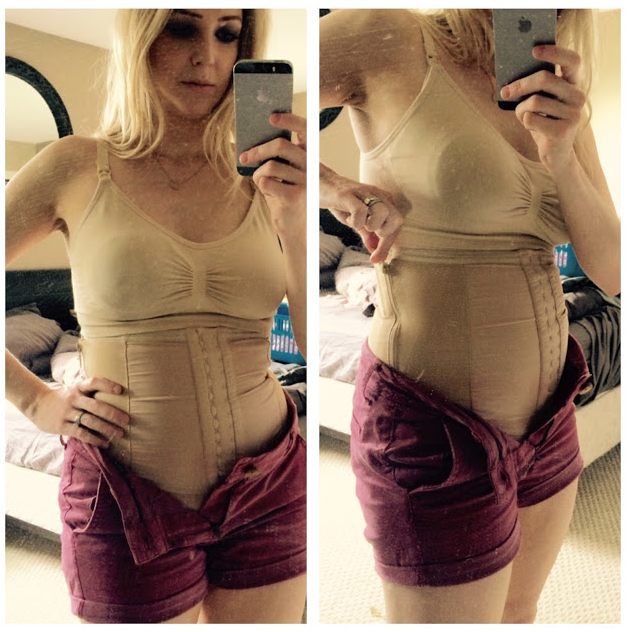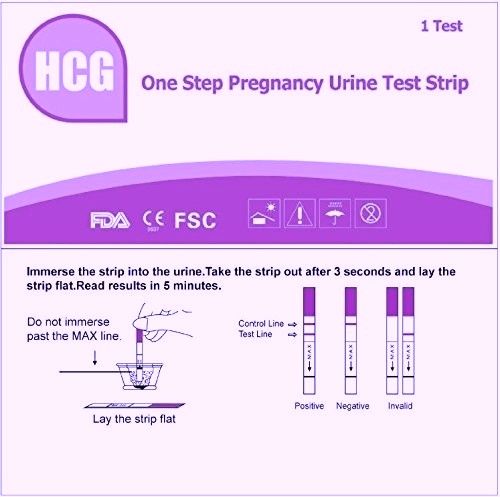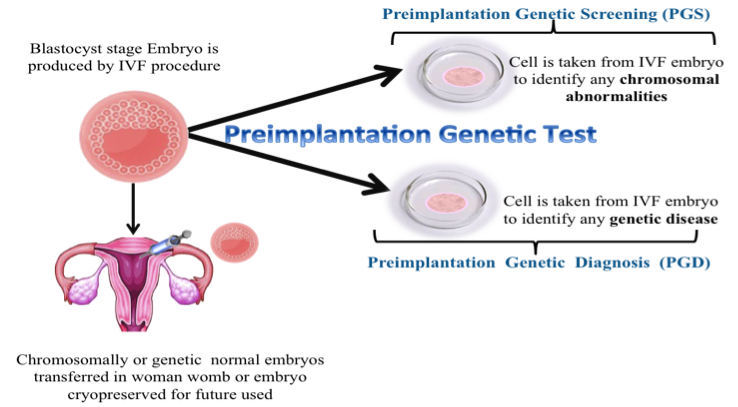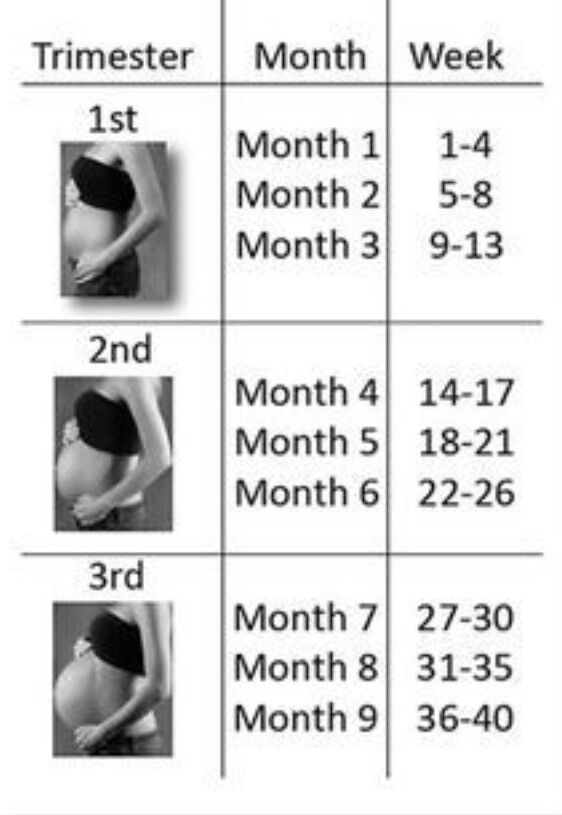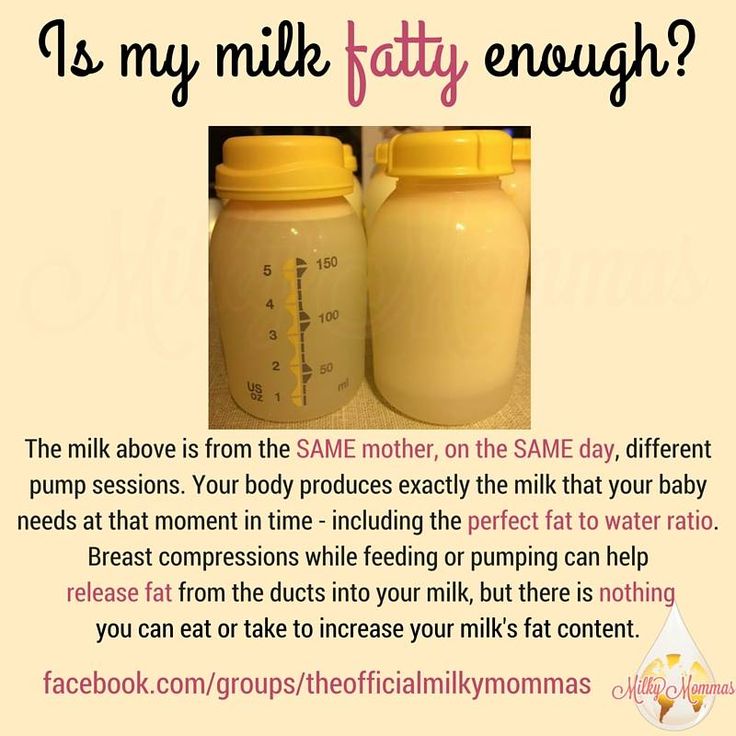6 week postpartum belly
How and When Your Postpartum Belly Changes After Birth
Watching your belly grow throughout pregnancy is pretty mesmerizing. It’s amazing what the body does in order to accommodate a growing baby. But at some point during those 40+ weeks, the wonderment of it all begins to wane, and you just want to have that baby in your arms—and your tummy back to its normal shape and size! The thing is: Once baby is out, your postpartum belly won’t look or feel like it did pre-pregnancy (at least, not for some time). What’s more, you may be surprised to learn that you’ll actually still look pregnant for a while. So what should you expect from your post-baby body—and what’s the typical postpartum belly progression? Read on for the lowdown.
In this article:
What your postpartum belly might be like after birth
Postpartum belly week by week
Proactive tips for how to lose your postpartum belly
What Your Postpartum Belly Might Be Like After Birth
In the immediate days following baby’s birth, your body will be doing a lot of work to recover and adjust to this sudden change. “Pregnancy generally lasts up to 40 weeks—that’s a long time,” says Aishwarya Bhagwandass, an ob-gyn for Atrium Health in Charlotte, North Carolina. “It makes sense that it’ll also take time for a woman’s body to eventually return to her pre-pregnancy [state].”
Whether you deliver vaginally or via c-section, you can expect to look down and still see a bump. But unlike your prenatal bump—which was your growing baby—your postpartum belly is the result of an expanded uterus. “During pregnancy, your uterus grows with your baby,” explains Bhagwandass. “Immediately after delivery, the uterus will still be larger than normal as the postpartum healing begins.”
In addition to a still-there bump, Bhagwandass says there are other external changes you may notice with your postpartum belly, including stretch marks, looser skin and possibly even darker skin. It may also feel a bit squishy after birth.
Of course, if you had a c-section, your postpartum belly will show an incision mark in your pubic area, which will be stitched together and bandaged up. Sinéad Dufour, PT, PhD, an associate clinical professor of rehabilitation science at McMaster University in Ontario, says the skin around your incision may feel pulled or taut. As you move through recovery, you’ll want to massage the area frequently to help alleviate this tightness.
Sinéad Dufour, PT, PhD, an associate clinical professor of rehabilitation science at McMaster University in Ontario, says the skin around your incision may feel pulled or taut. As you move through recovery, you’ll want to massage the area frequently to help alleviate this tightness.
As for what’s happening internally? You’ll likely feel a difference in your strength and function, says Dufour. “The muscles and associated connective tissue and skin that adaptively lengthen and accommodate your growing baby require time to recalibrate and reorganize back to pre-pregnancy status,” she says. Because of this, you may notice that you can’t generate as much power from your core as you could before pregnancy.
Additionally, some moms experience diastasis recti. Dufour explains that “this is when the abdominal tissues have [been excessively] strained to stretch through the pregnancy and birth process.” If this happens, your muscles will feel soft and potentially even look like they’re separated from each other. (Don’t worry, there are ways to address this separation.)
(Don’t worry, there are ways to address this separation.)
Postpartum Belly Week by Week
Just as your belly slowly grows to accommodate baby during pregnancy, it’ll slowly go back down to its normal size now that baby is on the outside. Postpartum belly progression varies from mom to mom. But, in general, you can expect to feel more like yourself within the first six months postpartum.
1 week postpartum belly
At one week postpartum, Bhagwandass says you can expect to look similar to how you did in the first day or so following birth. “You may still look pregnant, and that’s okay!” Even so, you can expect your belly to go down a bit, as the uterus will be more toned and firm. In fact, right after delivery the uterus weighs around 2 pounds, and by the end of the first week it’s down to around 1 pound, according to data.
2 weeks postpartum belly
You can expect to still have a bump at this point, but your postpartum belly will most likely be decreasing in size, according to Bhagwandass.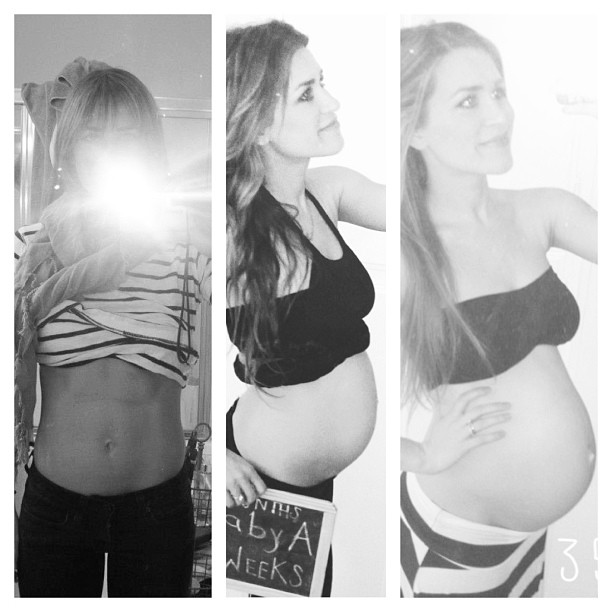 Your body will also be ridding itself of a lot of fluid during this time, which may lessen some of the tummy bloating you’re experiencing.
Your body will also be ridding itself of a lot of fluid during this time, which may lessen some of the tummy bloating you’re experiencing.
4 weeks postpartum belly
Over the course of weeks three through five, Bhagwandass explains that the uterus will continue to shrink. “Your uterus continues to contract back down, and this also allows your abdominal muscles on each side to return closer to each other.” In other words, you might start to feel a bit stronger. Research shows that by four weeks postpartum, your thyroid function should also be back to normal, which may result in you losing some of that belly weight.
6 weeks postpartum belly
Your uterus has contracted down quite a bit, and at six weeks postpartum, Bhagwandass says that many women “feel like their bellies are now back to their pre-pregnancy shapes.” Of course, all bodies are different, and this isn’t the case for every new mom. Dufour says it can take up to 12 weeks for some women to feel this way.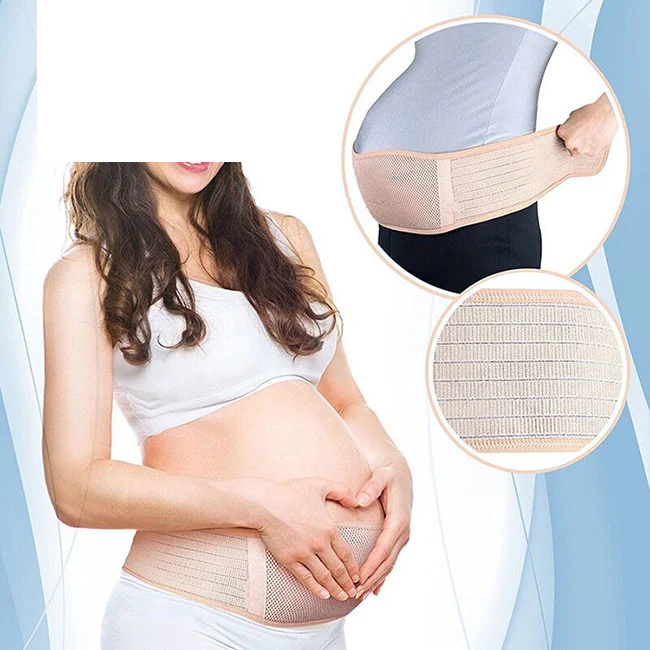 Regardless of where you land in this six-week stretch, you can still expect your postpartum belly to continue to feel a bit squishy, as your core muscles still need to be strengthened.
Regardless of where you land in this six-week stretch, you can still expect your postpartum belly to continue to feel a bit squishy, as your core muscles still need to be strengthened.
6 months postpartum belly
At this stage, your core muscles should also be significantly stronger, so your belly probably won’t feel quite as squishy as it did in those early days and weeks following baby’s birth. That said, remember that postpartum belly progression is different for every new mom. Search real postpartum belly pictures on social media, and you’ll see women of all shapes and sizes. And if you had multiples? Well, you can expect your postpartum twin belly to take even longer to go down.
Proactive Tips for How to Lose Your Postpartum Belly
It’s easy to get so hyper-focused on your postpartum belly that you can lose sight of how incredible your body is. After all, you just carried, nourished and delivered a small human. That’s no small feat; it’ll take a while to recover, so don’t rush the process.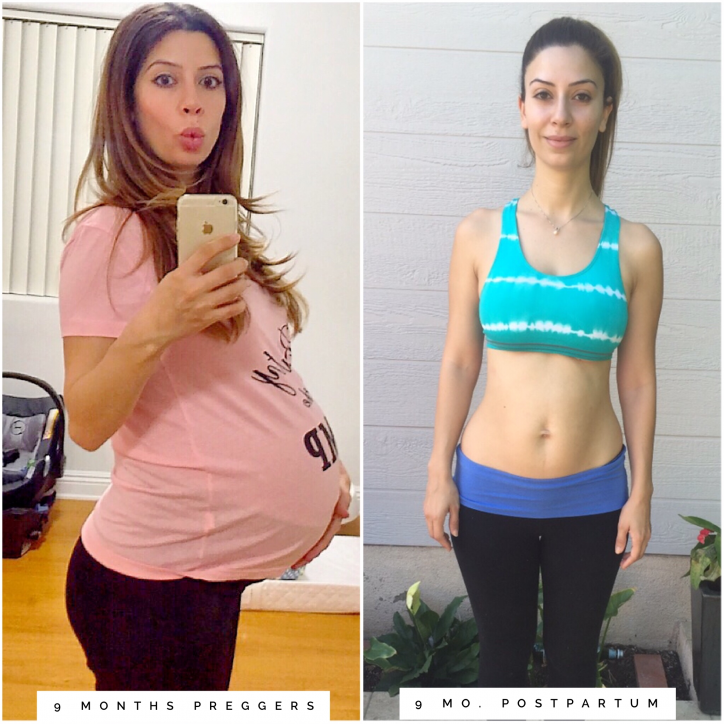 That said, you can appreciate what your body did and also want to lose your postpartum belly. Fortunately, there are some small lifestyle steps you can take to help this process along. Here are a few things to try:
That said, you can appreciate what your body did and also want to lose your postpartum belly. Fortunately, there are some small lifestyle steps you can take to help this process along. Here are a few things to try:
Low-intensity exercise
Exercise is an essential step to living a healthy, balanced life. But you’ll need to be gentle with yourself, and stay away from intense workouts at first. In fact, before getting started, Bhagwandass advises checking in with your ob-gyn or midwife at your postpartum visit. This checkup takes place about four to eight weeks after delivery; it gives your doctor time to evaluate your history and perform a physical exam. If you get the green light to begin exercising, start slow and steady with some simple, low-intensity routines. Here are some ways to get moving:
- Practice deep breathing and good posture. Deep breathing and good posture are always good for you. After childbirth, these simple steps can work toward strengthening your core.
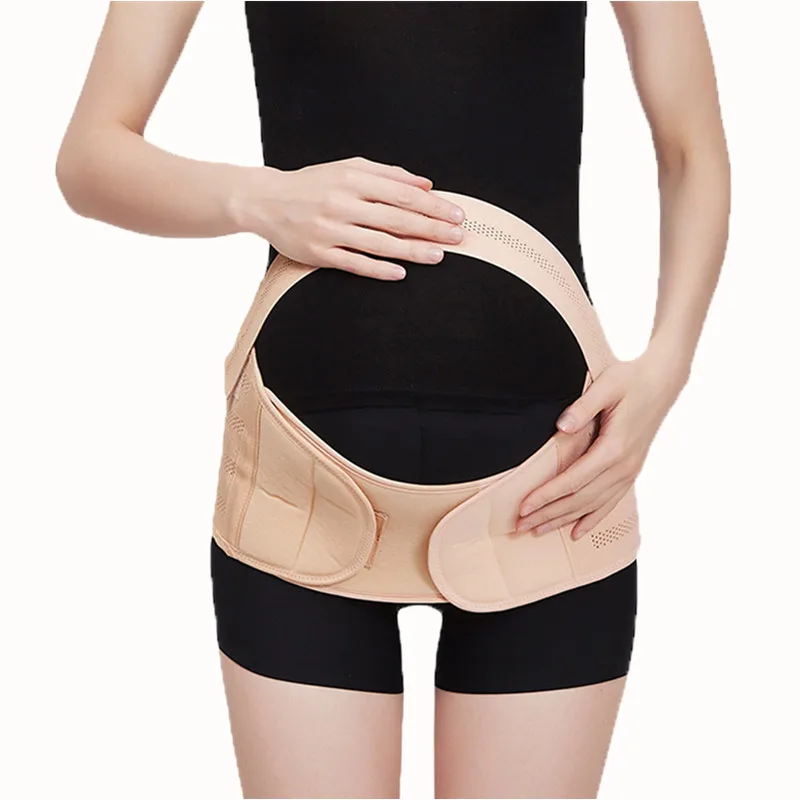 “The best way to help the belly restore optimally is engaging the ‘deep’ core muscles,” says Dufour. These include the breathing diaphragm, pelvic floor and the transversus abdominis muscles (aka your inner corset muscle). To do this, Dufour suggests standing in a way that keeps your back straight with your ribs over the pelvis. This posture sets the body up for “tension-free intentional breathing into the diaphragm.” Picture yourself breathing into your side ribs to really activate your deep core muscles.
“The best way to help the belly restore optimally is engaging the ‘deep’ core muscles,” says Dufour. These include the breathing diaphragm, pelvic floor and the transversus abdominis muscles (aka your inner corset muscle). To do this, Dufour suggests standing in a way that keeps your back straight with your ribs over the pelvis. This posture sets the body up for “tension-free intentional breathing into the diaphragm.” Picture yourself breathing into your side ribs to really activate your deep core muscles. - Take a walk. It may feel like anyone and everyone tells you to go on walks with baby. But there’s a reason for that: Getting out of the house and taking a slow stroll has physical and mental health benefits. One of these pros is strengthening your core and shrinking your postpartum belly. Dufour suggests taking easy walks “as early as possible” after delivering baby. While walking, make sure you’re engaging your core by maintaining good posture and breathing deep.
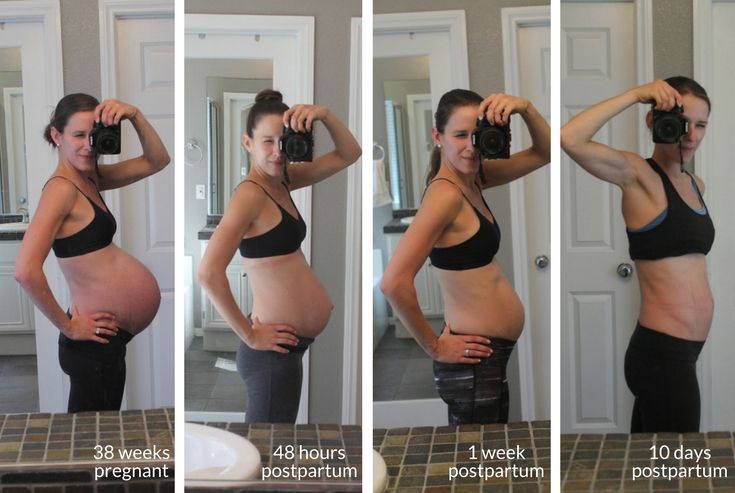 “Never underestimate the power of breathing and walking as global postpartum recovery strategies that help your belly, pelvic floor and more,” says Dufour.
“Never underestimate the power of breathing and walking as global postpartum recovery strategies that help your belly, pelvic floor and more,” says Dufour. - Start slow with core strengthening. Strengthening your core is going to be key in losing your postpartum belly. In general, try to avoid intense core routines, such as planks or sit-ups, during the first four months of the postpartum period, as research shows it’s associated with significant deterioration of muscle function. A good gentle core exercise to try is heel slides; lay on your back in a neutral position with your knees bent, then gently straighten one leg (dragging your heel across the floor as you go) before bringing it back to a bent position (dragging your heel across the floor again).
Talk to your doctor before starting any new exercise regimen, and be sure to listen to your body and know your limits—after all, you’re still recovering.
Use compression support
If you had a lot of swelling during pregnancy, you might have worn compression socks to help.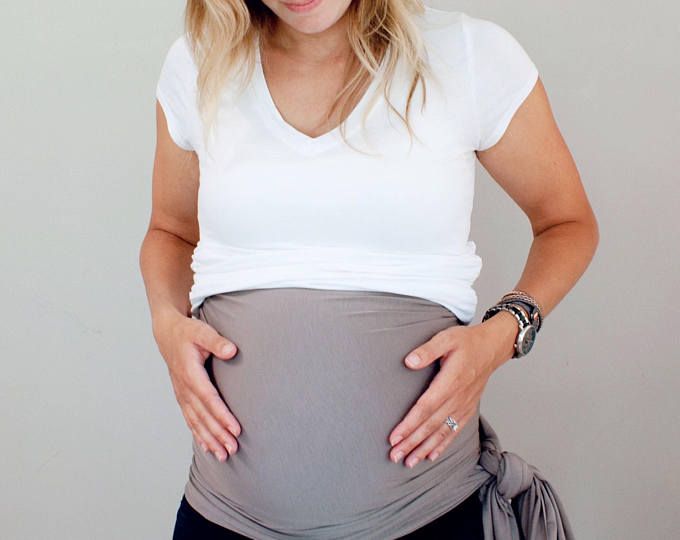 Well, compression is also useful during the postpartum stage; it can provide a little extra support to your core as your belly starts to shrink. “Using an external support in the postpartum period can assist with recovery and improve comfort,” says Dufour. That said, she stresses that it’s important not to get anything that’s too tight, such as corset-style compression.
Well, compression is also useful during the postpartum stage; it can provide a little extra support to your core as your belly starts to shrink. “Using an external support in the postpartum period can assist with recovery and improve comfort,” says Dufour. That said, she stresses that it’s important not to get anything that’s too tight, such as corset-style compression.
Work on your pelvic floor
You’ve probably heard a lot about your pelvic floor since you first got pregnant. But did you know that it’s connected to your core strength? According to Dufour, another way to help strengthen your core and get rid of your postpartum belly is by practicing pelvic floor exercises, such as kegels. She recommends talking to your doctor for tips. If necessary, they can refer you for pelvic floor therapy.
Becoming a parent changes everything about you—and your body is no exception. It’ll take a while for your postpartum belly to go down. But even if you’re eager to feel like yourself again, don’t forget to appreciate the amazing things you accomplished.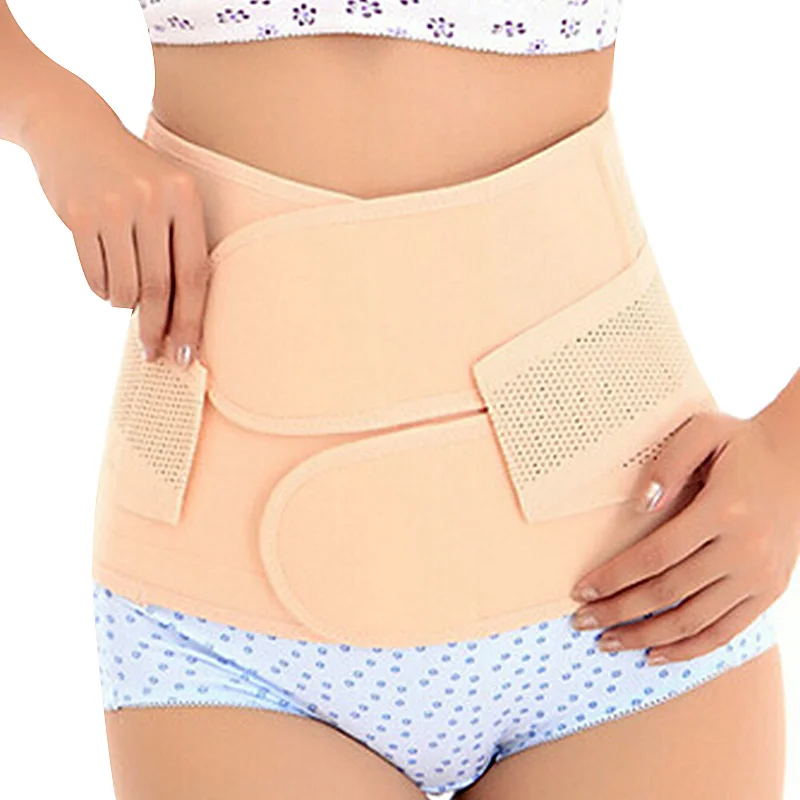 You created and cared for a tiny being in that belly of yours—and that is something worth celebrating.
You created and cared for a tiny being in that belly of yours—and that is something worth celebrating.
About the experts:
Aishwarya Bhagwandass, MD, is an ob-gyn with Atrium Health at Women’s Care at Eastover University in Charlotte, North Carolina. She earned her medical degree from the Medical College of Georgia, and completed her residency at Carolinas Medical Center.
Sinéad Dufour, PT, PhD, is an associate clinical professor of rehabilitation science at McMaster University and a member of the Lansinoh clinical advisory network. She earned her MScPT and completed a postdoctoral fellowship at McMaster University in Hamilton, Ontario, and her PhD in health and rehabilitation science from Western University in London Ontario.
Please note: The Bump and the materials and information it contains are not intended to, and do not constitute, medical or other health advice or diagnosis and should not be used as such.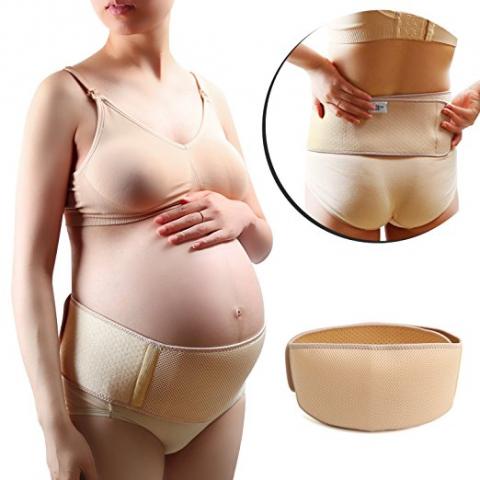 You should always consult with a qualified physician or health professional about your specific circumstances.
You should always consult with a qualified physician or health professional about your specific circumstances.
Plus, more from The Bump:
What to Expect Emotionally After Birth
Postpartum Recovery: What You’ll Be Able to Do When
Why a Postpartum Plan Is Just as Important as a Birth Plan
The Many Phases of Your Post-Baby Body, Explained
Medically reviewed by Valinda Riggins Nwadike, MD, MPH — By Mandy Major on February 25, 2020
Don’t believe those shots of a celeb’s taut 6-week postpartum tummy for one second. Real life looks a whole lot different unfiltered.
It was a breezy California day and mother of two Lisa Amstutz was feeling good. She was 10 months postpartum and enjoying a birthday party with her family… until a fellow guest struck up a conversation.
“Baby number three?!” the guest said excitedly, pointing to her stomach.
Nope, not pregnant.
“I tried to laugh it off,” she says, but the remark cut.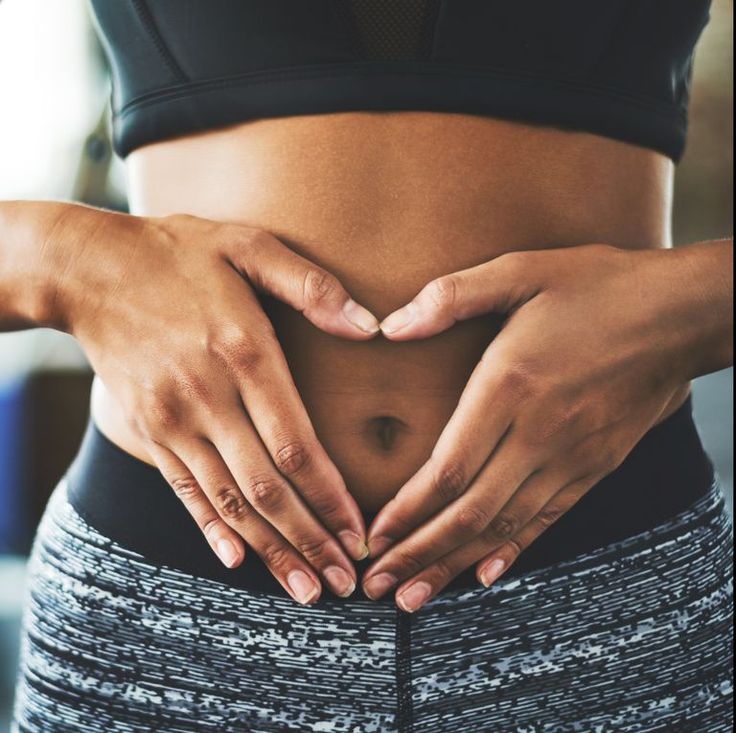 As a one-time Ironman athlete and lifelong runner, it was particularly tough. Her postpartum physique was different, especially after baby number two, and the post-baby weight she had lost crept back since returning to work from maternity leave.
As a one-time Ironman athlete and lifelong runner, it was particularly tough. Her postpartum physique was different, especially after baby number two, and the post-baby weight she had lost crept back since returning to work from maternity leave.
“I did not deal well with it emotionally,” she says of the comment.
And who would?
Culturally, we are obsessed with postpartum bodies (and pregnant ones too, let’s be honest). In the last 2 weeks alone I’ve counted 6 mainstream articles about the status of a celeb’s post-baby body, while a quick spin on Instagram reveals 8 of the top 15 trending postpartum hashtags are related to diet, fitness, and weight loss.
Our unrealistic expectations of what a postpartum body should look like don’t just lead to a social faux pas at a birthday — they can be deeply toxic to a person’s self-esteem and sometimes jeopardize a healthy recovery if it leads to premature exercise or food restriction. (Fact: You require more calories when lactating than you do pregnant. )
)
To help you come to terms with the real reality of this new phase of life, here’s a high-level look at what to expect after birthing your baby, from the first hours through the first year.
Whether had a vaginal or cesarean delivery, yes, you will look pregnant for at least the first few days, if not the first 2 weeks.
Don’t be alarmed! Uterine contractions will begin soon after birth, as your uterus starts the process of returning to size (aka “involution”), which can take up to 6 weeks. This will help your extended baby bump diminish. You may also be swollen for several days after the birth (especially if you were induced or had a C-section and were given IV fluids).
“After giving birth, you will lose about 10 pounds right away and a little more as body fluid levels decrease. Don’t expect or try to lose additional pregnancy weight right away,” reports the Office on Women’s Health. “Gradual weight loss over several months is the safest way, especially if you are breastfeeding.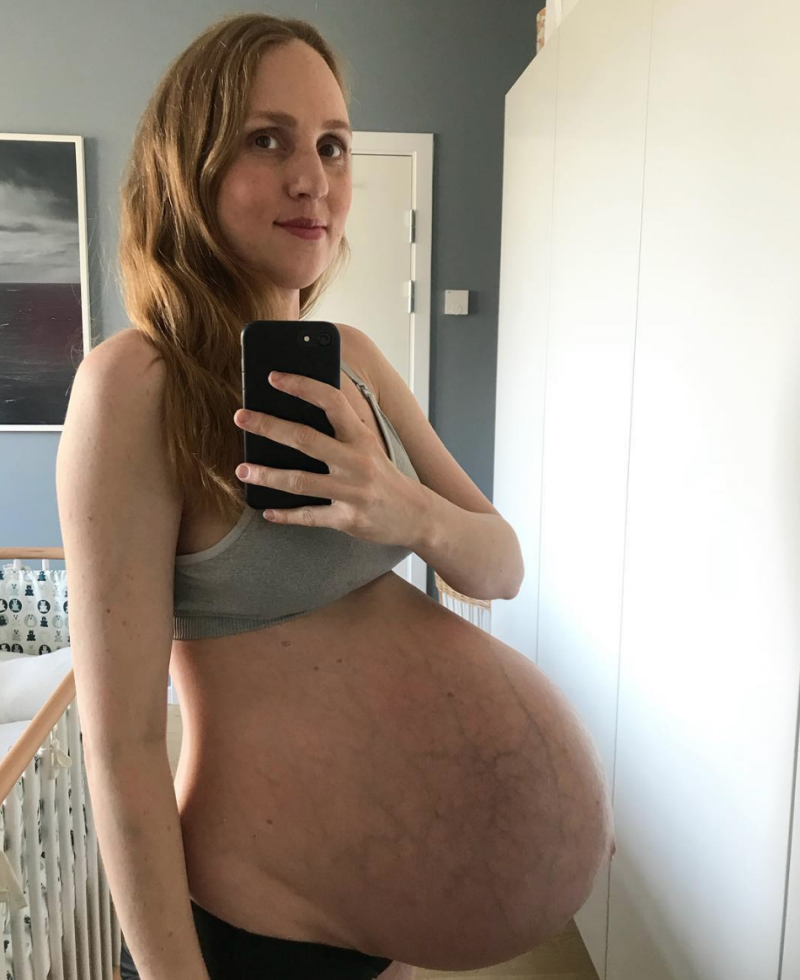 Nursing mothers can safely lose a moderate amount of weight without affecting their milk supply or their babies’ growth.”
Nursing mothers can safely lose a moderate amount of weight without affecting their milk supply or their babies’ growth.”
Whatever state your physique is in, rest is crucial during the first 2 to 4 weeks as your body recovers. Gentle movement is good (minimizes blood clots), but too much activity at this point can lead to excessive bleeding (beyond normal lochia) and injury, especially for C-section mamas. Don’t lift things heavier than the baby, no reaching up high on shelves for stuff, limit stairs, and for God’s sake, don’t do laundry or vacuum.
Unless you are dealing with a vaginal birth trauma of some kind, the one exercise that has been shown to be a good idea at this point is gentle pelvic floor exercises. (No, not for sex — it’s to prevent future incontinence.)
Let’s be clear: A flat tummy by 6 weeks postpartum is not normal.
The first 3 months “is the time of restoration of muscle tone and connective tissue to the prepregnant state. Although change is subtle during this phase … a womanʼs body is nonetheless not fully restored to prepregnant physiology until about 6 months post-delivery,” states a compelling 2010 study focused on pelvic floor health.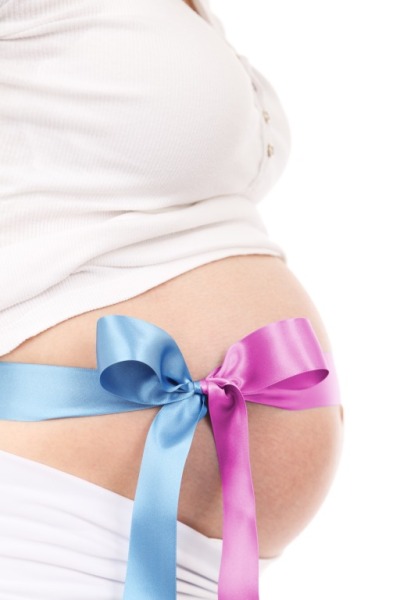 “Some changes to the [reproductive organs] are much longer in resolving, and some may never fully revert to the prepregnant state.”
“Some changes to the [reproductive organs] are much longer in resolving, and some may never fully revert to the prepregnant state.”
It’s not just your reproductive organs that are in question. Your entire postpartum body is on its own timeline, based on your genetics, circumstances, and the birth itself.
For example, breaking your tailbone during labor while giving birth to multiples will create a much different postpartum journey than someone who experienced an uncomplicated vaginal delivery of one child.
If everything is on the mend, you’ll likely get the green light from your OB-GYN to resume exercising around 6 weeks postpartum. And the American College of Gynecologists notes that exercising while breastfeeding doesn’t affect composition or production of milk. (Though nursing moms may want to feed before exercise, to avoid the discomfort of engorged breasts while jogging or lifting!)
Ramp up mindfully between 6 weeks to 3 months postpartum. Whatever you’re doing, protect your ligaments and joints.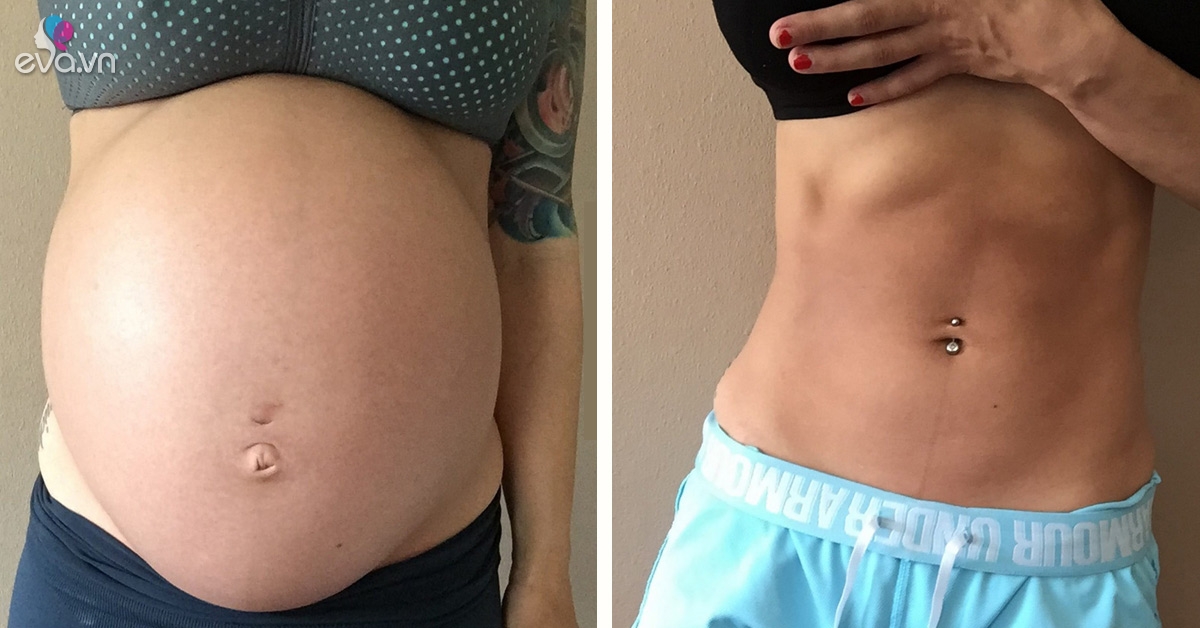 They may still be looser than normal due to relaxin, a hormone that increases during pregnancy to soften joints and allow your hips to widen in anticipation of birth.
They may still be looser than normal due to relaxin, a hormone that increases during pregnancy to soften joints and allow your hips to widen in anticipation of birth.
Postpartum bodies from 3 to 6 months postpartum are as diverse as they were prior to pregnancy.
Everything influences where you might be at in this stage: your weight before pregnancy, your level of activity, your diet and access to food, social support, a return to work, and whether you are contending with any perinatal mood disorders or other birth-related trauma.
An older 2008 study examining postpartum depression and weight gain found that women who had new-onset postpartum depression were twice as likely to retain a “substantial” amount of weight by their baby’s first birthday. It’s particularly striking in light of the fact that up to 15 percent of birth persons will experience postpartum depression.
Another surprise: The adage that breastfeeding will help you lose weight? Not true! The most compelling (though dated) study I’ve found on breastfeeding and postpartum weight retention discovered that breastfeeding only helped you lose weight if you gained no more than 26 pounds during pregnancy.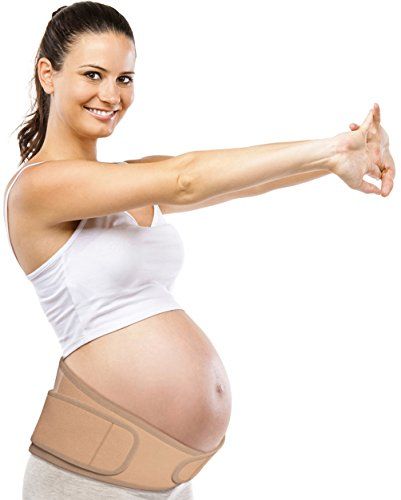 And, even then, it took a full 6 months for the study subjects to achieve their pre-pregnancy weight. (Stretch marks, fat redistribution, and loose skin not measured!)
And, even then, it took a full 6 months for the study subjects to achieve their pre-pregnancy weight. (Stretch marks, fat redistribution, and loose skin not measured!)
Finally, a multi-year study published in 2014 found that women who gained more than the Institute of Medicine’s weight gain recommendations for pregnancy were more likely to be hanging on to a few extra pounds 18 months postpartum. (Makes sense.) However, by and large, most of the 56,101 women in the study did return to their pre-pregnancy weight within 18 months. (So tell those judgy jerks that all bets are off until baby is 1 1/2 months old. )
On average, it’s about a year to recover physically and emotionally from birth — at least according to a prominent 2012 study.
If you’re like most people (not a ride-or-die Crossfitter who signed up for a half marathon 8 weeks postpartum), somewhere between 6 to 18 months postpartum you’ll find your rhythm. Will you look like “you”? The one you knew before baby? That’s hard to say.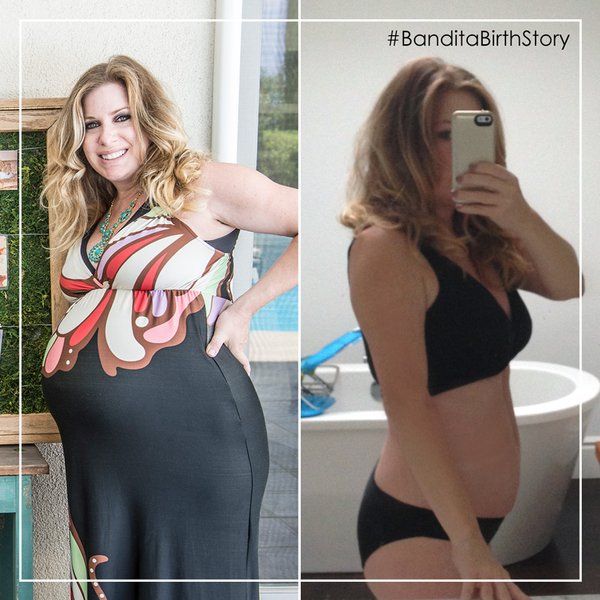
Anecdotally, some women I know became thinner. Some never lost the last 10 pounds. Others became substantially heavier. Another person intentionally kept the weight on as a sacrifice to her beloved baby; the lactation-inducing medication she needed came with weight gain as a side effect.
Scientifically, there are a few things to watch out for. Postpartum thyroiditis will impact your physique, as will diastasis recti (up to 60 percent of women may have this separation of ab muscles). Outside of conditions such as those, the stats say it typically boils down to time, energy level, priority of weight loss, and motivation.
Energy is all about sleep, and no surprise there: Sleep has a massive influence on weight and motivation. An older 2008 study found that women who slept less than 5 hours within a 24-hour period at 6 months postpartum were 2.3 times more likely to retain at least 11 pounds at 1 year postpartum.
And let’s not discount how many first-time mothers in the United States will return to work. This places enormous time constraints on moms, especially if any “free” time at work is used to pump. Exercise, carefully curated meals, and self-care are frequently the first things sacrificed.
This places enormous time constraints on moms, especially if any “free” time at work is used to pump. Exercise, carefully curated meals, and self-care are frequently the first things sacrificed.
That said, carrying excess weight into subsequent pregnancies can lead to poorer pregnancy outcomes, including gestational diabetes, overweight babies, and lower rates of breastfeeding. And today, 45 percent of women begin pregnancy overweight or obese (up from 24 percent in 1983), which may be a primary factor in midlife obesity.
Discounting these facts would be unwise. However, the incessant and immediate message of “get your body back” is deafening. It’s also completely tone-deaf. Science agrees. It may take 9 months to grow a tiny human, but it takes most of us 18 months to rebuild our bodies afterward. And even then they still may look different, but damn if they aren’t absolutely incredible.
Mandy Major is a mother, certified postpartum doula PCD(DONA), and the co-founder of Major Care, a telehealth startup offering remote doula care for new parents. Follow along @majorcaredoulas.
Follow along @majorcaredoulas.
how to remove and tighten the skin?
The birth of a child is the most beautiful and anticipated moment in the life of every girl. But the joy of motherhood always has another side - the reflection in the mirror no longer pleases. The stomach most often suffers from excess weight after pregnancy and childbirth. A sagging apron, multiple stretch marks (stretch marks) on the skin, diastasis - all these changes cause a certain discomfort to a young mother.
Many people say that you can get in shape with the help of diet and sports, but, unfortunately, these methods do not cope with all the changes that have occurred. For example, the “apron” on the stomach after losing weight will sag even more, and stretch marks and diastasis will not go away.
Return a slender and toned belly after childbirth - abdominoplasty (tummy tuck) is one of the most popular plastic surgeries in the world to restore lost shape.
Belly after childbirth: how do the muscles behave?
From the middle of the 2nd trimester of pregnancy, the abdominal muscles begin to gradually stretch under the influence of a significant increase in the uterus and strong internal tension.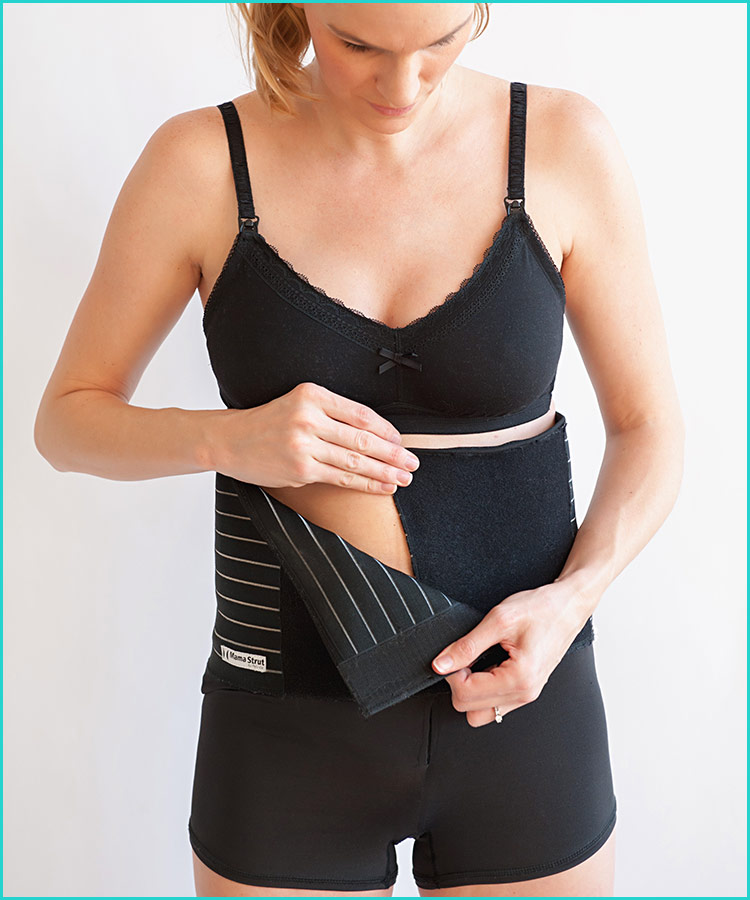 The rectus abdominis muscles literally "diverge" to the sides. This provokes the occurrence of diastasis - the divergence of the rectus abdominis muscles. Plus, the influence of the hormonal background is added to this.
The rectus abdominis muscles literally "diverge" to the sides. This provokes the occurrence of diastasis - the divergence of the rectus abdominis muscles. Plus, the influence of the hormonal background is added to this.
But nature cunningly conceived the female body - after the birth of a baby, the abdominal muscles return to their original state. Unfortunately, this doesn't happen for everyone. There may be several reasons:
- dysplasia (weak connective tissue fibers)
- significant fetal weight
- low level of physical fitness - the muscular corset of the expectant mother is not ready for transformation
- short interval between births (less than 1.5 years)
It is worth noting that each subsequent pregnancy increases the likelihood of muscle separation.
As a rule, the belly after childbirth worries young mothers more from an aesthetic point of view. The abdomen looks round, puffy, with flabby and sagging skin, there is no relief.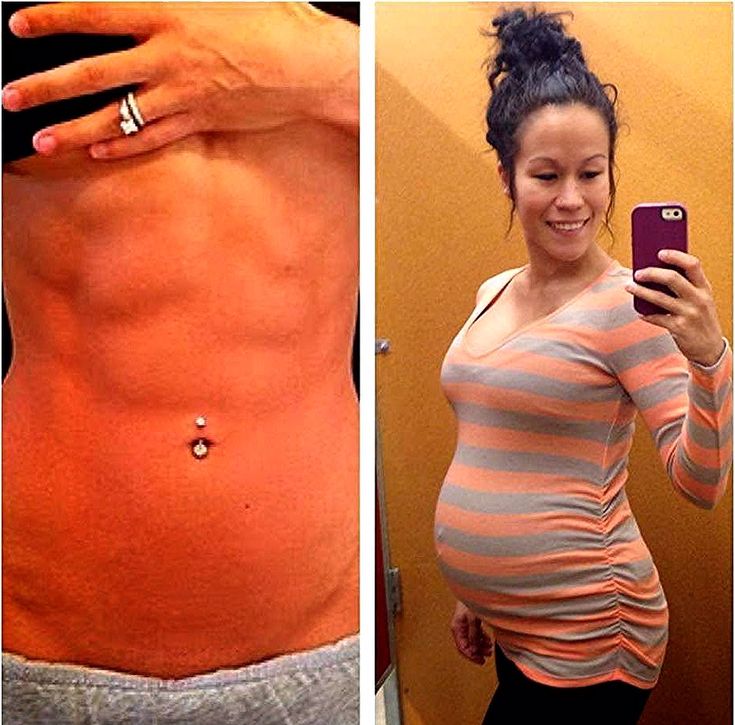
What if the belly sagged after childbirth?
Sagging belly after childbirth is a very common and characteristic phenomenon for young mothers. But it's not just the skin that sags. On the abdomen, the body accumulates fat deposits to protect the unborn baby.
It is important to understand: the belly does not quickly return to shape after childbirth, the body needs time to recover. Approximately after 2 months, the uterus returns to its prenatal state, the hormonal background and other body systems are restored. A woman in labor loses extra pounds, and the skin on her stomach tightens. In this case, the following will help: proper balanced nutrition, wearing compression underwear (bandage) for 4-6 months after childbirth, cosmetic procedures (massages) and physical exercises. All recommendations are given in the hospital, so strictly adhere to them.
But it is not always necessary to rely on the restoration of forms. For example, after a caesarean section, the abdominal muscles simply cannot return to their previous shape due to the fact that they are physiologically unable to “close”.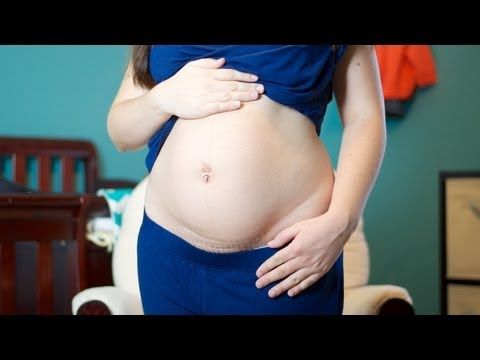 Then the stomach after childbirth is significantly noticeable, the navel looks a little “turned out” outward. And all this is accompanied by stretched skin. In this case, there are direct indications for abdominoplasty.
Then the stomach after childbirth is significantly noticeable, the navel looks a little “turned out” outward. And all this is accompanied by stretched skin. In this case, there are direct indications for abdominoplasty.
How to tighten the skin on the abdomen?
Before starting recovery after childbirth, it is worth consulting with your family doctor. Usually, experts recommend starting this no earlier than 2 months after childbirth.
The recovery process is always individual and can take from 5 months to 1 year. It all depends on many factors:
- how much did you gain during pregnancy
- what was the birth - natural or caesarean section
- baby weight
You can restore the tone of the stomach after childbirth, conditionally, in 2 ways: at home, eating right and playing sports, or contact a plastic surgeon.
Stretch marks on the abdomen after childbirth
More than half of new mothers develop stretch marks after childbirth.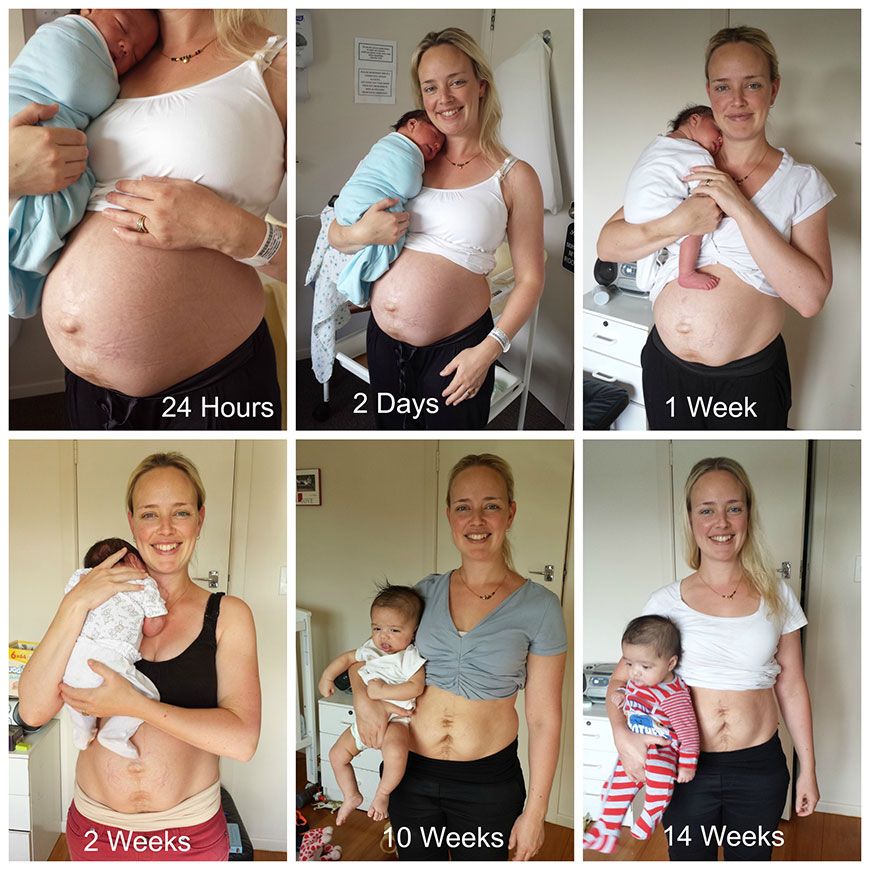 What are stretch marks on the skin? These are skin imperfections. In simple terms, the skin "tears" and scar tissue appears in this place. Stretch marks are often pink at first and then fade to whitish. Sometimes microtraumas destroy small vessels and capillaries, which stain striae in a maroon color.
What are stretch marks on the skin? These are skin imperfections. In simple terms, the skin "tears" and scar tissue appears in this place. Stretch marks are often pink at first and then fade to whitish. Sometimes microtraumas destroy small vessels and capillaries, which stain striae in a maroon color.
The main reasons for the appearance of stretch marks are hormonal changes and weight fluctuations (a sharp set of kilograms, and then weight loss). Also, the skin, due to the lack of collagen and elastin, cannot withstand the increase in the circumference of the abdomen and hips.
Stretch marks most often occur on the thighs and abdomen. It is impossible to remove them at home. One of the solutions for a small number of stretch marks on the body is laser resurfacing with a Fotona laser. The procedure improves their appearance.
Stretch marks can be removed during a surgical tummy tuck. Completely go away striae, which are located near the navel and lower abdomen. In addition, due to the fact that during abdominoplasty the skin is smoothed, stretch marks become almost invisible.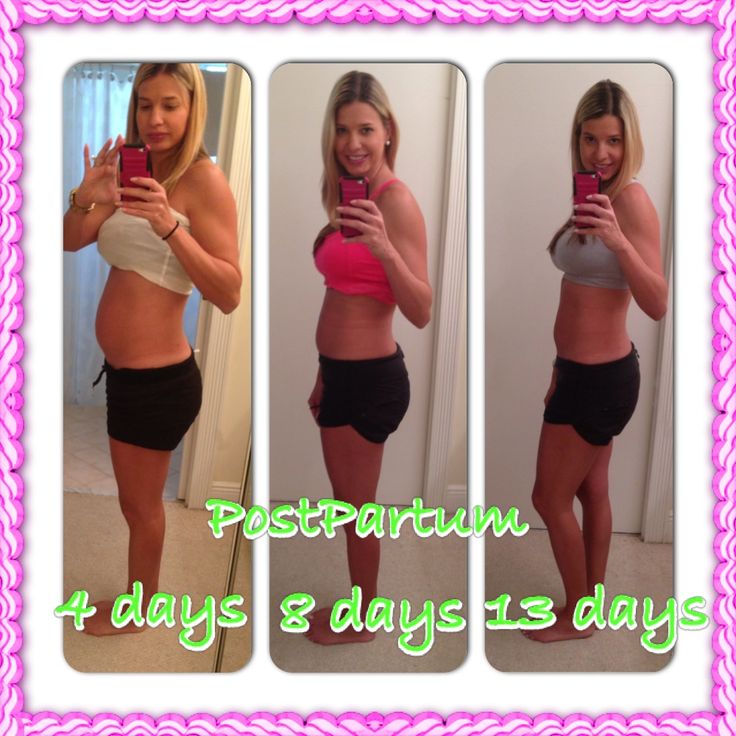
How to clean the belly after childbirth at home?
Young mothers usually begin the return of lost forms at home.
- Proper nutrition. This is the foundation of all foundations. But young mothers often make the main mistake - they want to lose weight quickly. Rapid weight loss has a negative effect on the figure. You need to eat properly and fully. Only then can good results be achieved. In numbers, breastfeeding takes up to 800 calories, so the daily diet of a nursing woman should be 1300-1400 calories. Thus, weight loss will be uniform and will allow you to fix a stable weight.
- Bandage. Properly selected compression underwear will help to quickly contract the skin and support weakened abdominal muscles.
- Physical exercise. It is worth resuming physical activity no earlier than 6-8 weeks after the birth of a child. Start with a moderate load, preferably cardio training - walking, running, and then strength. The last thing you need to load the press.
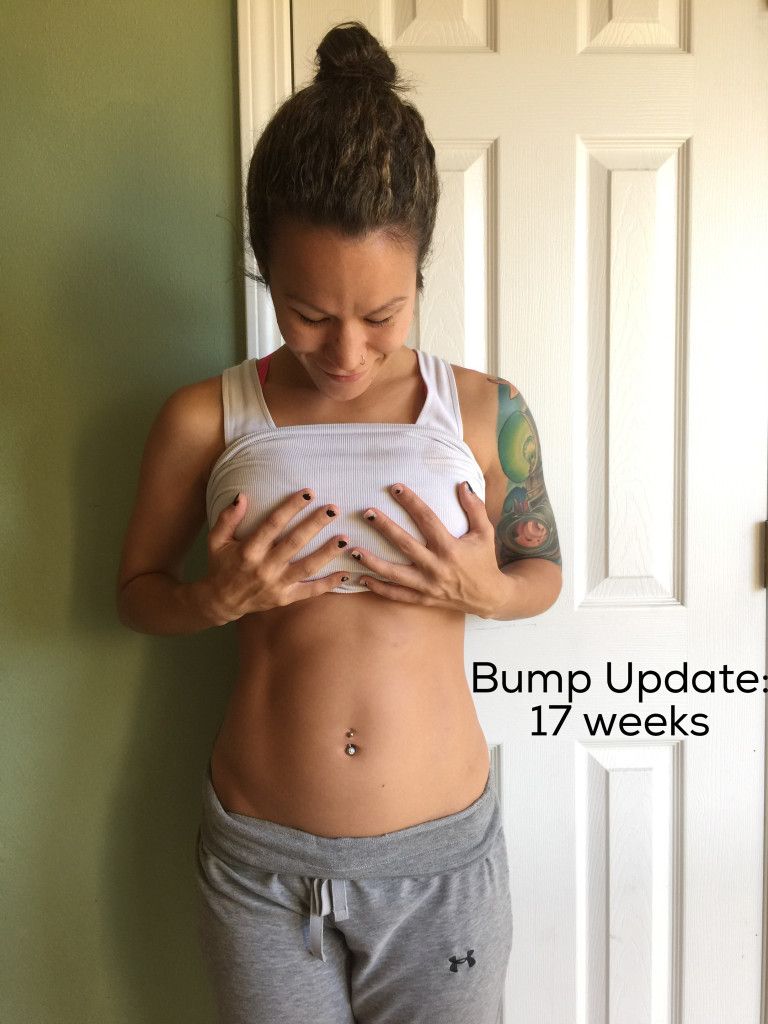
- Massage. Home vacuum massage stimulates the production of collagen and elastin, improving skin quality.
How to clean the stomach after childbirth with the help of a doctor?
In most cases, surgery is needed to achieve a smooth and flat stomach, just like before childbirth.
Plastic surgery, which is aimed at giving a tightened appearance to the abdomen, is called abdominoplasty. Its essence: removal of excess skin from the anterior abdominal wall, fat deposits and strengthening the white line of the abdomen. A full range of problems can be solved in one surgical intervention:
- remove overhanging skin-fat "apron"
- eliminate loose skin and partial stretch marks
- suture diastasis
- remove unaesthetic retracted scar after caesarean section
- strengthen abdominal muscles
- outline the waistline
Abdominoplasty is always performed under general anesthesia.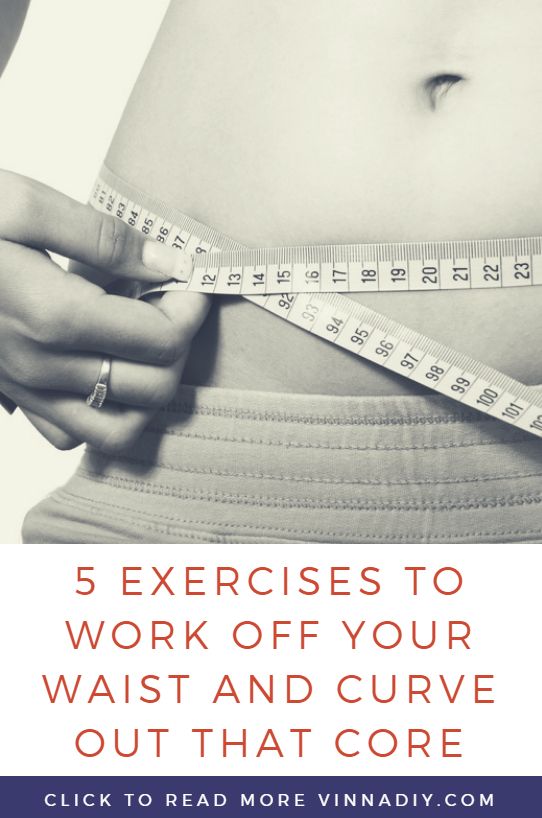 The duration of the surgical intervention is determined by its volume. Usually it is 2-2.5 hours.
The duration of the surgical intervention is determined by its volume. Usually it is 2-2.5 hours.
There are the following types of tummy tuck:
- Mini tummy tuck. Performed with minimal aesthetic defect. It does not involve the removal of a large "apron" and the transfer of the navel.
- Classic full tummy tuck. It is carried out with significant sagging of the skin, the presence of a skin-fat "apron", deformity of the navel.
A tummy tuck is often combined with liposuction - lipoabdominoplasty - to achieve maximum results.
When the surgeon says yes
For surgical tummy tuck, like any operation, there are indications:
- aesthetic dissatisfaction with the shape of the abdomen
- sagging skin-fat "apron"
- skin laxity, postoperative scars (caesarean section scar), scars
The first step to a perfect figure is a consultation with a plastic surgeon. Only he can determine the indications for plastic surgery and give recommendations.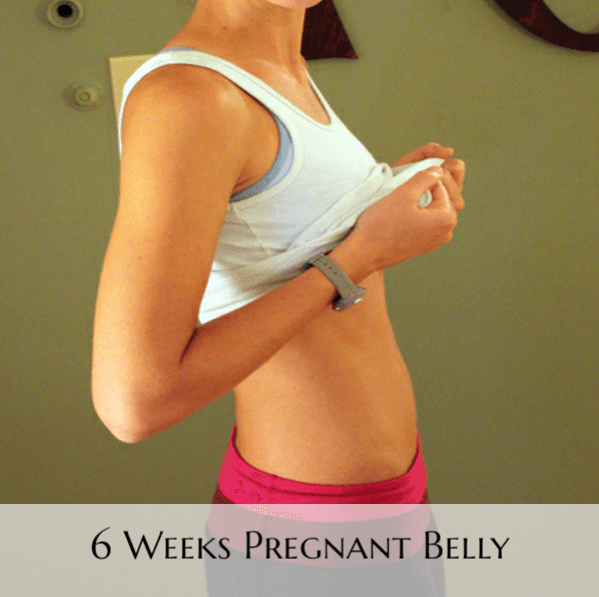 And, of course, before surgery, it is important to undergo an examination and pass tests. According to their results, the surgeon will be able to say the final “yes”.
And, of course, before surgery, it is important to undergo an examination and pass tests. According to their results, the surgeon will be able to say the final “yes”.
And when you shouldn't…
Abdominoplasty is the most effective way to restore beauty to the stomach. But there are situations when you should not rush. For example, if you are planning another pregnancy. A tummy tuck operation is recommended when the family is formed and the girl does not plan to give birth. This will be the key to a stable and long-term result.
Also, tummy tuck has a number of contraindications:
- chronic diseases of internal organs in the acute stage
- heart or lung failure
- malignant growths
- bleeding disorder
The results will not keep you waiting
Rehabilitation after a tummy tuck takes 2 weeks.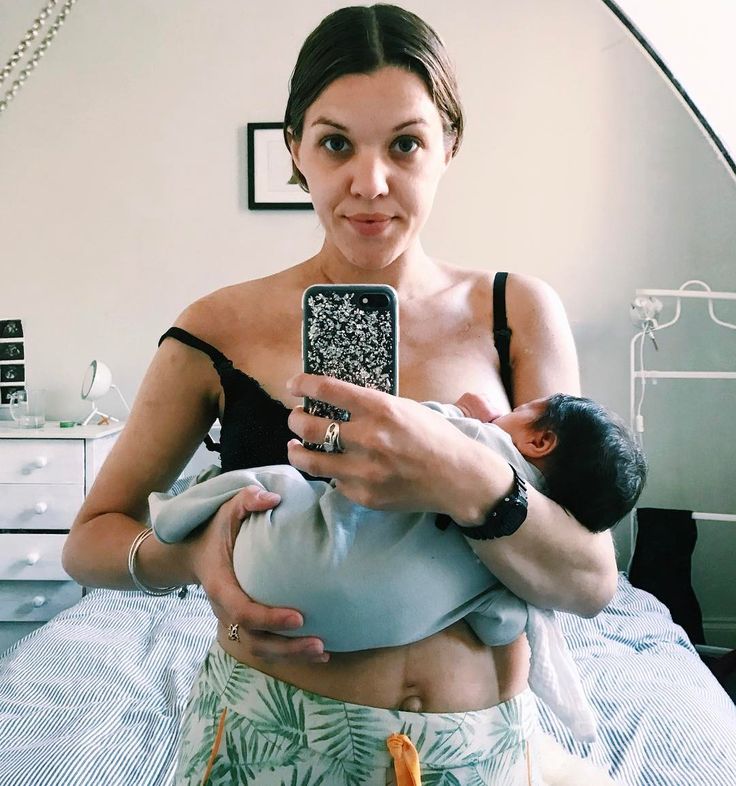 All this time (around the clock) the patient must walk in a bandage - this is important to stabilize the result and reduce postoperative risks. You can evaluate the result of a tummy tuck after 1 month.
All this time (around the clock) the patient must walk in a bandage - this is important to stabilize the result and reduce postoperative risks. You can evaluate the result of a tummy tuck after 1 month.
Postpartum recovery
In most cases, the restoration of normal health is not rapid. The first sensation of incredible relief has passed, and now you notice that the stomach is still large, and even a little sore. To take its former size, the uterus must still be contracted for a long time and diligently. Its weight decreases from 1 kg to 50 g within 6-8 weeks.
Since the contraction of the uterus occurs due to the work of the muscles, this is accompanied by pain sensations of varying intensity, reminiscent of light contractions. You may notice an increase in pain while breastfeeding your baby. The thing is that stimulation of the nipple causes an increase in the level of oxytocin in the blood, which contributes to uterine contractions.
For better uterine contraction, it is recommended to lie on your stomach after childbirth.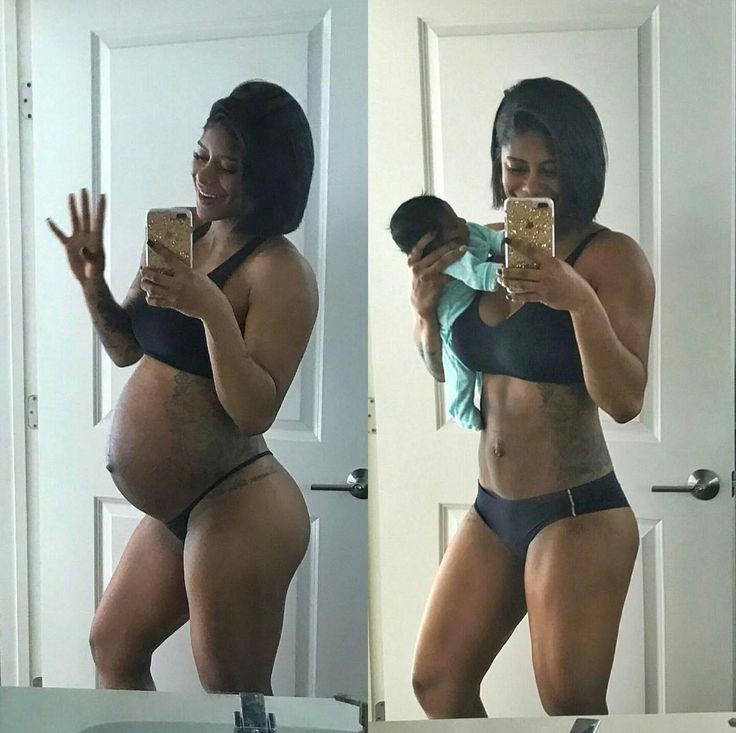 If you feel good, try to move more and do gymnastics.
If you feel good, try to move more and do gymnastics.
Another disturbing circumstance is pain in the perineum, which appears even if there were no tears and the doctor did not make an incision. This is due to the fact that the tissues have undergone a strong stretch during childbirth. Usually the pain is not very intense and disappears in 2-3 days. But if there were tears or a perineal incision, then it can hurt longer - 7-10 days. You should carefully monitor the seams, carry out hygiene after each visit to the toilet. In addition, it is necessary to treat the sutures daily with antiseptic solutions, you can not sit for 2 weeks.
Haemorrhoids often appear after childbirth. Careful hygiene and daily evening showers help reduce pain. Do not forget about the diet, include in your diet foods rich in fiber and with a slight laxative effect: seaweed, beets, baked apples, cauliflower, germinated cereals. Medications are usually not used because the inflammation usually goes away with time. If everything does not go away by itself and the woman continues to suffer from hemorrhoids, you need to consult a doctor and apply the medicines prescribed by him or take a course of physiotherapy procedures.
If everything does not go away by itself and the woman continues to suffer from hemorrhoids, you need to consult a doctor and apply the medicines prescribed by him or take a course of physiotherapy procedures.
Constipation that occurred during pregnancy may also remind of itself in the postpartum period. They are, in particular, caused by the fear of damaging the seams in the perineum. However, such fear is unfounded. In addition, during a bowel movement, you can hold the area where the stitches are applied with a napkin, which will reduce the stretching of the tissues, and the bowel movement will be less painful. The chair usually does not happen immediately after childbirth, but after 2-3 days. To prevent constipation, eat prunes and dried apricots, drink mineral water. And only if there was no bowel movement on the 3rd day, you can use a laxative candle.
After childbirth, especially strong discharge from the uterus is observed on the first day, then it decreases. After 3 days, the discharge becomes muco-bloody. By the 5-6th week after birth, the discharge from the uterus stops altogether. During this period, hygiene must be carefully observed, because an infection that has entered the uterus can lead to endometritis (an inflammatory process of the uterine mucosa).
By the 5-6th week after birth, the discharge from the uterus stops altogether. During this period, hygiene must be carefully observed, because an infection that has entered the uterus can lead to endometritis (an inflammatory process of the uterine mucosa).
For 9 months, all the organs of the female body worked to ensure the child's proper development and good health. Now he was born and became quite "independent". However, the functions of a woman-mother did not end there. The main one - to provide the baby with food - is taken over by the mammary glands. In the body of a woman, hormonal changes continue, due to which significant changes occur in the mammary glands, and they begin to produce milk. In the first 2-3 days, colostrum is released, and already on the 3-4th day - transitional milk, which gradually turns into mature breast milk. Feeding your baby stimulates milk production. Therefore, in case of insufficient lactation, more frequent breastfeeding is recommended.
However, women often face the opposite problem - an excess amount of milk and difficulty in its outflow. This, in turn, leads to its stagnation and engorgement of the mammary glands - they harden, increase in volume, and painful sensations appear in the chest area. It may even increase body temperature. How to prevent such occurrences?
This, in turn, leads to its stagnation and engorgement of the mammary glands - they harden, increase in volume, and painful sensations appear in the chest area. It may even increase body temperature. How to prevent such occurrences?
First of all, try to breastfeed your baby regularly, and in the first 3-4 days after birth, limit fluid intake to 800 ml per day. Then the mammary glands will gradually become soft again. In addition, it is important to know that in the first days after childbirth, the skin of the nipples is very delicate and may crack. This makes them vulnerable to infection, the entry of which into the cracks is fraught with the development of mastopathy. Therefore, you need to take good care of the nipples and wear a comfortable bra, which will help the proper development of lactation.
To prevent cracks in the nipples, it is necessary to apply the baby to each breast in turn in the first 2-3 days after childbirth. First, give the baby one for 5-7 minutes, then another for 5-7 minutes.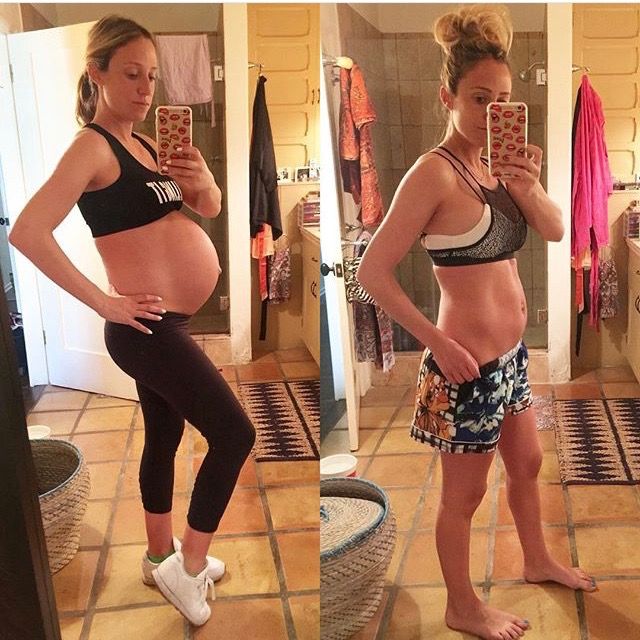 To prevent cracks, there is a special cream that needs to be used between feedings, and before them, carefully wash off its remnants.
To prevent cracks, there is a special cream that needs to be used between feedings, and before them, carefully wash off its remnants.
That's all the troubles that are easily forgotten and seem not so significant against the background of new worries. Now your attention will be constantly occupied by the baby. However, it is very important not to forget about yourself, maintain your health and restore your former beauty. Not everyone succeeds, which contributes to the development of postpartum depression.
Lochiometer
After childbirth, under the influence of cellular enzymes secreted by the granulation shaft, blood clots and fragments of the decidua remaining on the walls of the uterus are liquefied. In addition, leukocytes, erythrocytes, plasma and lymph penetrate into the uterine cavity through the wound surface. All these elements form lochia - a postpartum wound secret, which normally actively flows from the uterine cavity through the cervical canal into the vagina.
The first 2-3 days after birth, lochia have a bloody character, then, from the 4th-5th day, they acquire a dark red and brownish hue, and after a week they become yellowish-white due to the high content of leukocytes. From the 10th day, the discharge becomes light, watery, serous-mucous consistency. Gradually, the number of lochia decreases, and by the end of the 3rd week, the discharge practically stops and soon disappears completely.
With a delay in the outflow of postpartum secretions, they speak of a lochiometer - stagnation of lochia in the uterine cavity. The danger of developing lochiometers lies in the high probability of infection of the contents of the uterus, since lymph, serum, blood, and tissue remnants serve as the best nutrient medium for the reproduction of microbial flora. Most often, against the background of lochiometers, endometritis develops.
Causes of the development of lochiometers
The development of lochiometers is due to mechanical obstacles to the outflow of secretions in the cervical canal or insufficient uterine contractility.
Mechanical obstruction may be due to kinking (hyperanteflexia) of the uterus or obstruction of the cervical canal by blood clots, remnants of the decidua, and flaking uterine tissue.
Insufficient contractile activity of the uterus in the postpartum period usually develops as a result of overstretching of the uterus (with a large fetus, polyhydramnios or multiple pregnancy), weak or discoordinated labor, spasm of the internal os, caesarean section.
The development of lochiometers is facilitated by prolonged bed rest and low activity after childbirth.
Symptoms of lochiometer
Lochiometer develops 5-7 days after birth, characterized by a marked decrease or cessation of postpartum discharge from the uterus. At the same time, there is an increase in the size of the uterus compared to the norm for the current postpartum day, its soreness on palpation. The general health and objective condition of a woman with a lochiometer does not suffer, body temperature is normal, tachycardia is absent.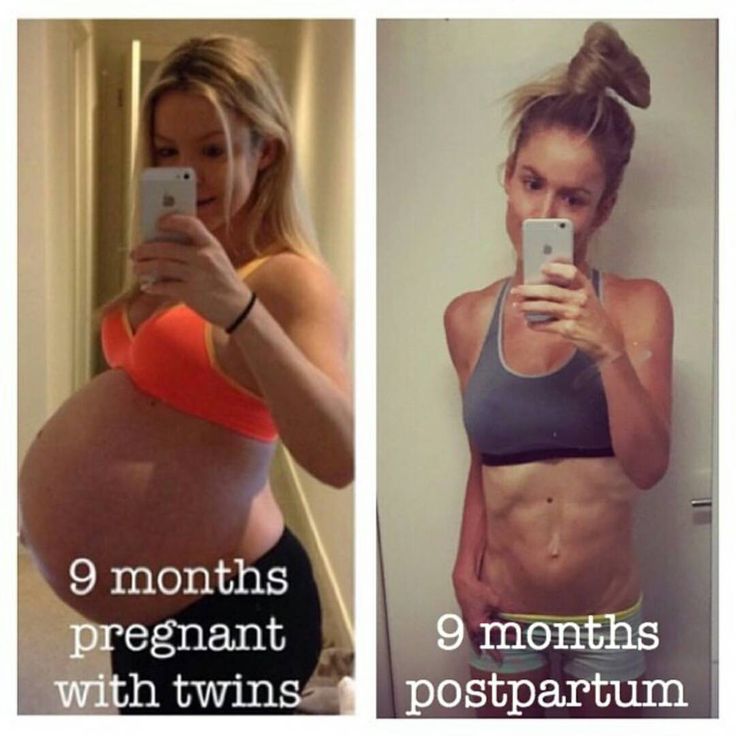
When delaying timely therapeutic tactics in relation to lochiometers, fever appears (body temperature 38-40 ° C), chills, cramping pains, turbid discharge with an unpleasant odor, tachycardia. After 1-2 days, the temperature drops critically with the simultaneous appearance of liquid purulent lochial discharge.
Diagnosis lochiometers
Lochiometers are diagnosed by characteristic clinical signs. With the help of a gynecological examination, an unevenly enlarged and painful uterus is determined, which has a densely elastic consistency, often - the closure of the internal pharynx, the bend of the uterus.
Clarifying lochiometer diagnostics includes ultrasound. during which the expansion of the uterine cavity is revealed, the presence of hyperechoic blood clots and liquid blood in it.
Treatment of lochiometers
Treatment of lochiometers consists in ensuring the free outflow of lochia, taking into account the cause that caused this condition.
When lochiometers are detected, the gynecologist prescribes injections of antispasmodics (papaverine, no-shpy) to relieve spasm of the uterine os. In the treatment of lochiometers, uterotonic (contracting the uterus) agents are used - oxytocin, methylergometrine. For a free outflow of secretions, the puerperal is recommended to lie on her stomach 2-3 times a day for 1-2 hours.
In case of hyperanteflexion of the uterus, the bend is eliminated during the bimanual examination; exercise therapy is prescribed. In the case of a lochiometer due to blockage of the cervical canal by clots, when viewed on a chair, digital dilatation of the cervical canal and careful removal of clots are performed.
Situations when the lochiometer is not allowed within 2-3 days are considered by clinical gynecology as an indication for instrumental removal of the contents of the uterus with a curette or vacuum apparatus under hysteroscopy control. For the prevention and treatment of postpartum infections against the background of lochiometers, antibiotics are prescribed, taking into account the results of a bacteriological smear.
Complications of lochiometers
If, after the elimination of lochiometers, uterine tenderness, its poor contraction, hyperthermia persist, one should think about the development of postpartum metroendometritis.
If the infection progresses, the condition of the puerperal may worsen due to the development of purulent-resorptive fever, manifested by intoxication, abdominal pain, purulent discharge with a putrid odor. Against this background, the transition of lochiometers to pyometra is noted.
Prevention and prognosis with lochiometer
To prevent the development of lochiometers, competent management of pregnancy and preparation of the woman for childbirth are required, as well as careful monitoring of the puerperal during the postpartum period: regular monitoring of uterine contractions (daily palpation determination of its sensitivity, consistency, fundus height), volume and nature of discharge .
In the postpartum period, a woman needs to monitor the timeliness of emptying the bladder and intestines, breastfeed the newborn on demand, perform postpartum exercises, and lie on her stomach.